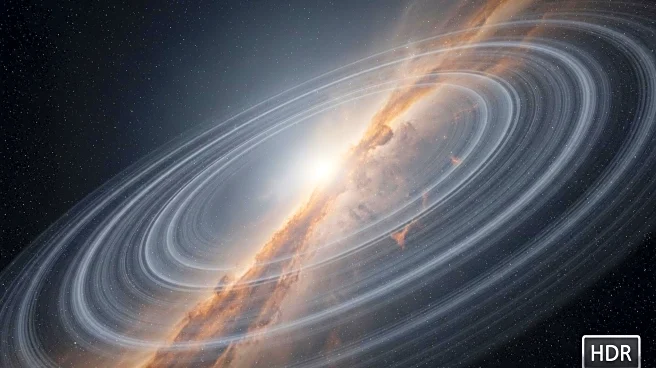What's Happening?
A team of astronomers has successfully photographed a growing planet outside our solar system for the first time. This planet is located within a cleared gap of a multi-ringed disk of dust and gas surrounding a young star. The discovery was made using advanced adaptive optics systems at the Magellan Telescope in Chile, the Large Binocular Telescope in Arizona, and the Very Large Telescope in Chile. The research, led by University of Arizona astronomer Laird Close and Richelle van Capelleveen from Leiden Observatory, has been published in The Astrophysical Journal Letters. The team identified the planet, designated WISPIT 2b, by detecting a specific emission of visible light known as hydrogen alpha, which is emitted as the planet accretes hydrogen gas from its surroundings.
Why It's Important?
This discovery is significant as it provides direct evidence supporting the theory that gaps in protoplanetary disks are caused by nascent planets. Until now, only a few young protoplanets had been observed, and none within these disk gaps. The ability to detect planets in these gaps helps astronomers understand the process of planet formation, which is crucial for comprehending the origins of our own solar system. The findings could lead to advancements in the study of planetary systems and improve our understanding of the conditions necessary for planet formation.
What's Next?
The research team plans to continue studying the WISPIT-2 system to gather more data on the formation and characteristics of the planets within it. Further observations using adaptive optics systems may reveal additional planets and provide insights into the dynamics of protoplanetary disks. This ongoing research could refine models of planet formation and contribute to the search for habitable planets in other star systems.
Beyond the Headlines
The discovery raises questions about the diversity of planetary systems and the potential for finding Earth-like planets in similar protoplanetary environments. It also highlights the importance of technological advancements in adaptive optics, which allow astronomers to overcome atmospheric disturbances and capture clearer images of distant celestial objects.












